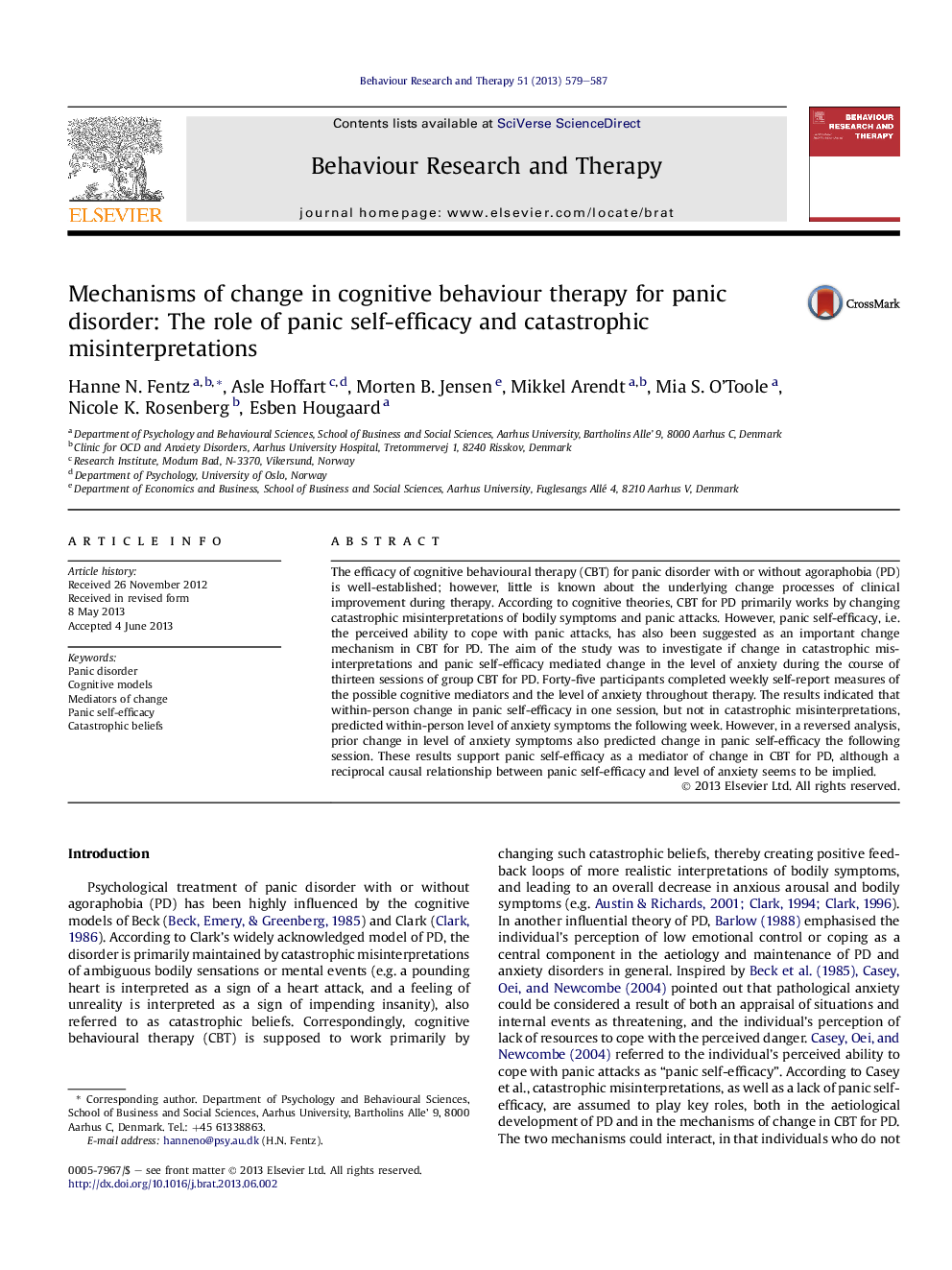| Article ID | Journal | Published Year | Pages | File Type |
|---|---|---|---|---|
| 10444495 | Behaviour Research and Therapy | 2013 | 9 Pages |
Abstract
The efficacy of cognitive behavioural therapy (CBT) for panic disorder with or without agoraphobia (PD) is well-established; however, little is known about the underlying change processes of clinical improvement during therapy. According to cognitive theories, CBT for PD primarily works by changing catastrophic misinterpretations of bodily symptoms and panic attacks. However, panic self-efficacy, i.e. the perceived ability to cope with panic attacks, has also been suggested as an important change mechanism in CBT for PD. The aim of the study was to investigate if change in catastrophic misinterpretations and panic self-efficacy mediated change in the level of anxiety during the course of thirteen sessions of group CBT for PD. Forty-five participants completed weekly self-report measures of the possible cognitive mediators and the level of anxiety throughout therapy. The results indicated that within-person change in panic self-efficacy in one session, but not in catastrophic misinterpretations, predicted within-person level of anxiety symptoms the following week. However, in a reversed analysis, prior change in level of anxiety symptoms also predicted change in panic self-efficacy the following session. These results support panic self-efficacy as a mediator of change in CBT for PD, although a reciprocal causal relationship between panic self-efficacy and level of anxiety seems to be implied.
Keywords
Related Topics
Health Sciences
Medicine and Dentistry
Psychiatry and Mental Health
Authors
Hanne N. Fentz, Asle Hoffart, Morten B. Jensen, Mikkel Arendt, Mia S. O'Toole, Nicole K. Rosenberg, Esben Hougaard,
